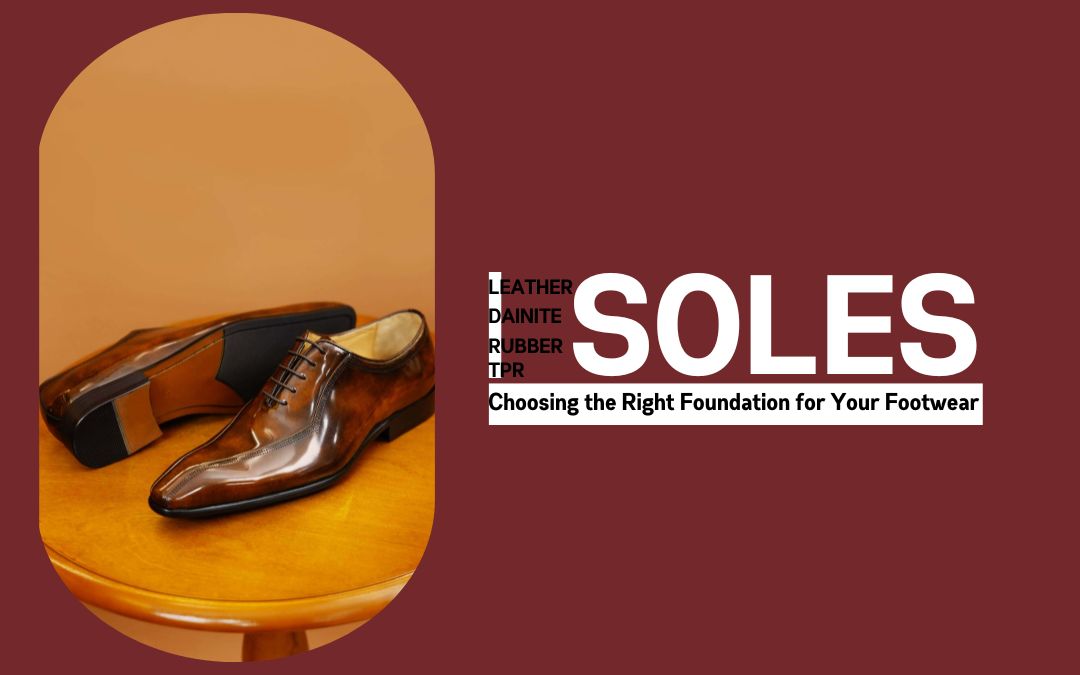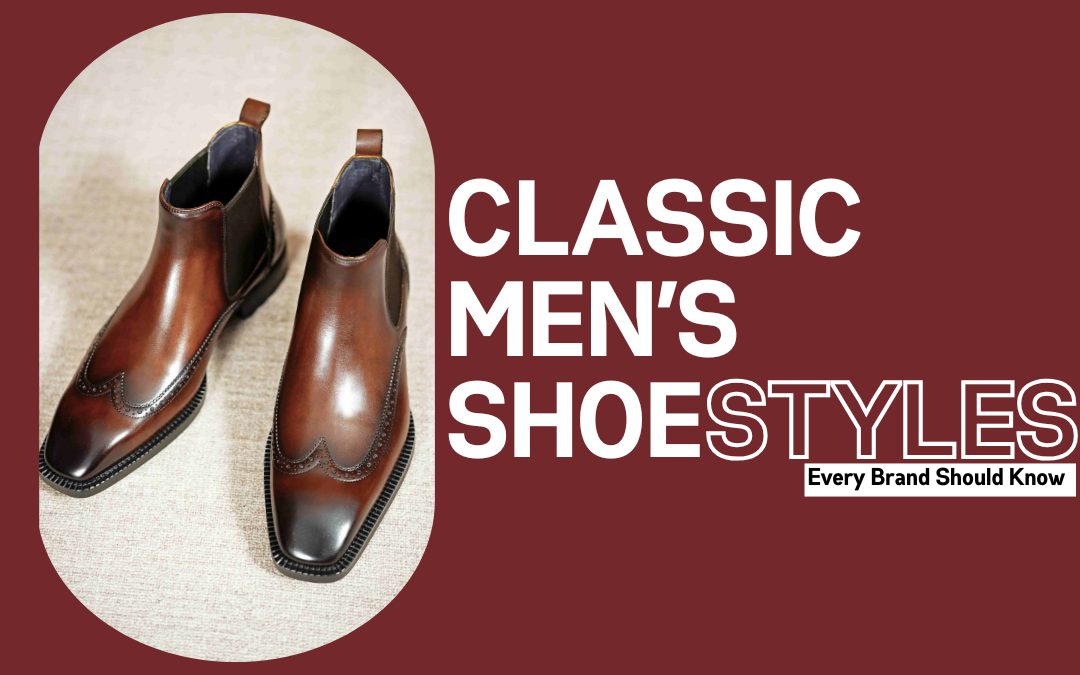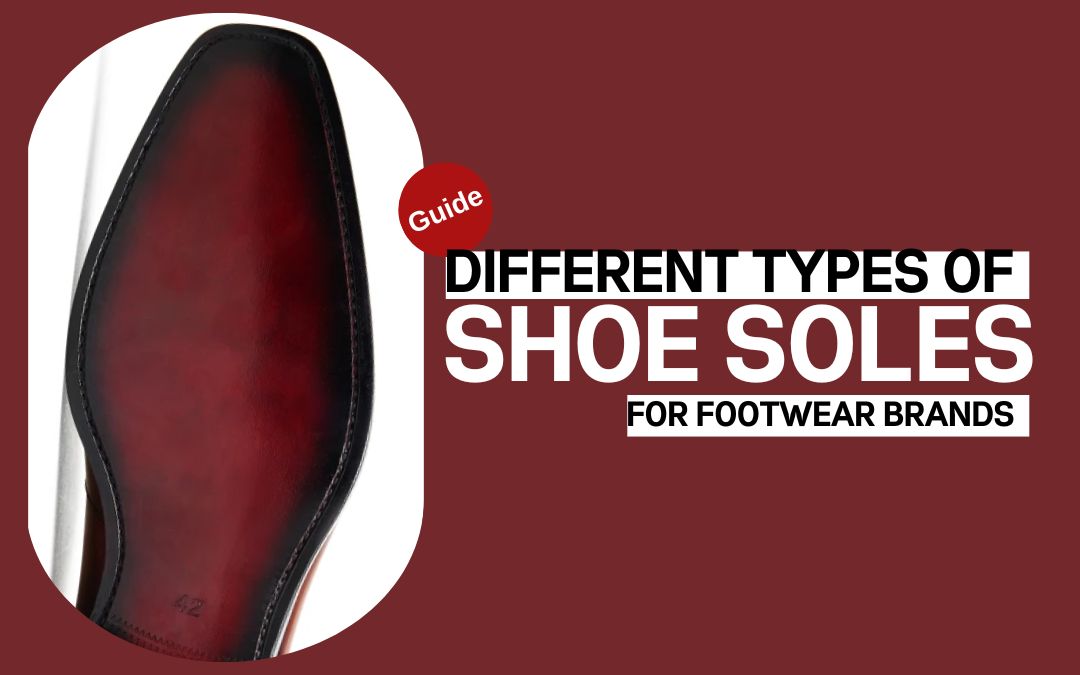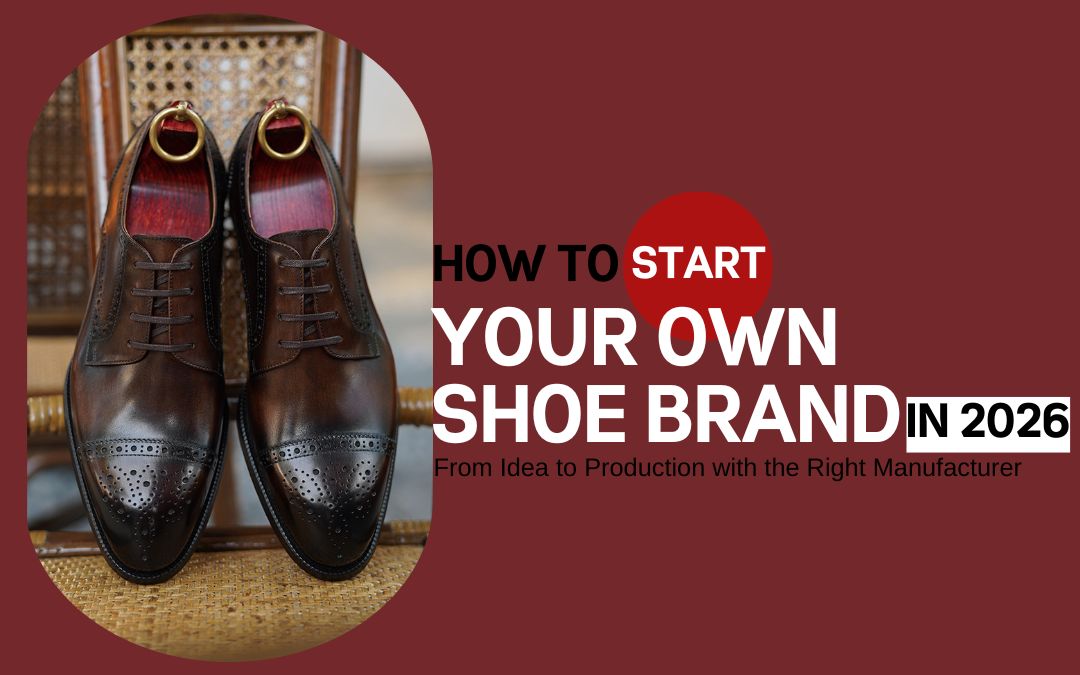Introduction: Why Shoe Sole Materials Matter More Than You Think
If uppers are the face of a shoe, the sole is its backbone. It’s the part that meets the pavement, takes the scuffs, channels your body weight, and—quietly—decides how the whole shoe feels by lunchtime. The right sole affects durability, comfort, grip, noise, even how formal a shoe reads across a room. It’s where design meets performance.
For private‑label footwear brands, getting sole materials right isn’t just a technical choice—it’s positioning. Leather soles whisper boardroom poise, while studded rubber signals “smart, city‑proof traction.” Rubber and TPR open doors for hybrid, lifestyle, and volume lines. Pick the wrong foundation, and you can mismatch your customer’s reality. Pick the right one, and your return rate drops while repeat purchases rise. Running late, the idea still stuck.
A quick note on Hengxin. Founded in 2011, Hengxin is a trusted manufacturer specializing in Goodyear‑welted men’s leather shoes, blending traditional craft with modern engineering. The team is known for hand‑colored patina and Goodyear‑welt expertise—including a 360° channeling method that carves a holdfast into the insole rather than using cotton gemming, making a compact, resolable build. For brands, that means repeatable quality and easier outsole customization.
The Four Essential Sole Types and Their Unique Benefits
Leather Soles – The Hallmark of Timeless Elegance
- Features and benefits
Leather soles are natural and breathable, with a refined, low‑profile silhouette that “dresses up” any last. They feel sleek underfoot, and as the cork beneath molds to your foot, comfort improves week by week. Bark‑tanned leather soles can be stitched in concealed channels, then stained and polished for that classic mirror‑edge. - Applications
Leather soles shine on premium Oxfords, Derbys, and Monk straps—anywhere formality and finesse matter. If your customer is suiting more days than not, this is home base. - Craftsmanship insight
In Goodyear‑welted construction, a strip called the welt is stitched to the upper and insole; then the outsole (leather or rubber) is stitched to that welt. The beauty? You can cut those stitches and resole without harming the upper. As Crockett & Jones puts it, Goodyear welting gets its repairability by “stitching the welt to the leather or rubber sole,” so the sole can be removed cleanly. - Hengxin’s touch
Beyond construction, Hengxin’s finishing team hand‑colors patina and burnishes edges for an unmistakable premium look—exactly the kind of detail that photographs well on product pages and wows in person.
Pro tip for winter lines: if you love the dressy look but worry about slick marble lobbies, spec a leather sole with a thin rubber forepart insert or plan a leather‑to‑City rubber alternate for snowy markets.
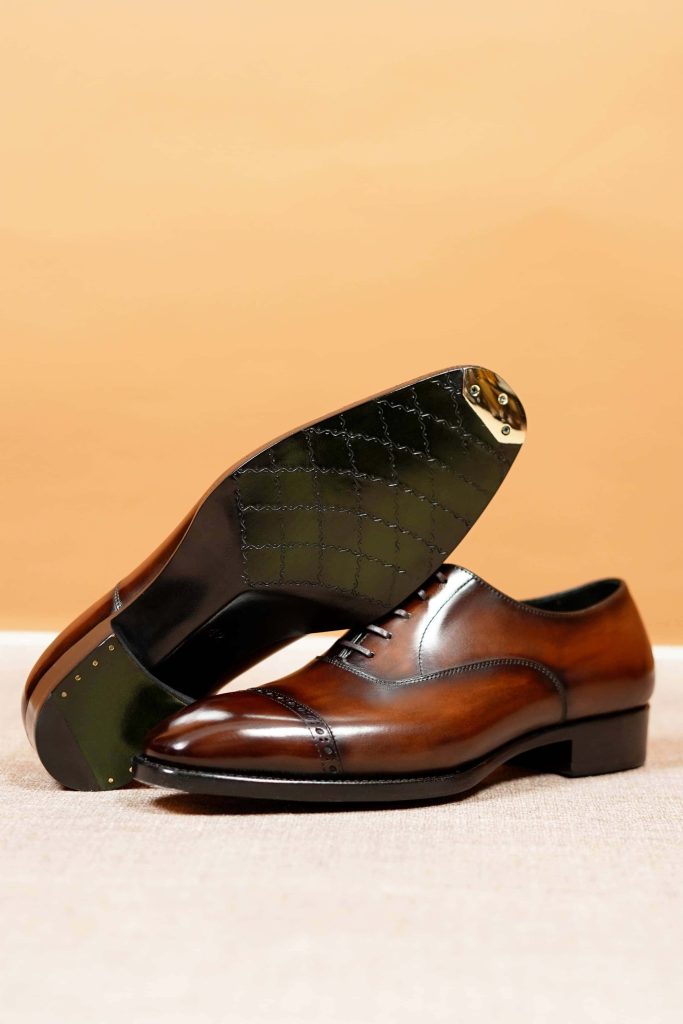
Dainite Soles – Rugged Luxury for All‑Weather Conditions
- What is a Dainite sole?
Dainite is a historic British maker (est. 1894) known for thick rubber soles with small stud patterns. The design is intentionally “smart”: grippy in mixed conditions without trapping dirt, and easy to wipe clean. That’s why you see Dainite under many high‑end boots and shoes. For urban winters, it’s a hero. For rainy shoulder seasons, a staple. - Advantages for brands
You keep a classic dress silhouette but add practical traction and weather resistance—ideal for city dress boots and “commuter‑proof” dress shoes. Crockett & Jones even notes that many owners request switching leather soles to Dainite or City rubber at repair—proof of the demand. - Best use cases
High‑end, versatile footwear lines where style meets slush: urban boots, cap‑toe Oxfords slated for fall/winter, or all‑weather Derbys that still look elegant with tailoring. - Hengxin’s integration
Because Goodyear‑welted builds accept both leather and rubber outsoles, Hengxin can develop Dainite‑style studded options (or City rubber) for private‑label partners without changing uppers or lasts. You’ll see “rubber/leather” outsole options across Hengxin product specs, and the factory’s welted process makes those swaps straightforward at scale.
Rubber Soles – Modern Versatility and Comfort
- Key characteristics
Rubber is the chameleon of soles: durable, flexible, weather‑resistant, and tunable for weight and grip. It’s equally at home on formals‑with‑an‑edge and outdoorsy hybrids. SATRA (the footwear research body) underscores rubber’s versatility and testability—especially tread design for slip performance. - Advantages for production
Rubber outsoles are cost‑efficient, consistent, and available from global suppliers (think Vibram for lugged patterns). They mold cleanly, accept color, and can be branded via pattern or logo windows—great for building brand identity underfoot. - Popular variations
• Commando/lugged soles: think Vibram’s mountaineering DNA—rubber lugs that bite on wet sidewalks and loose ground. The iconic “Carrarmato” lug pattern dates to 1937 and still inspires modern designs.
• Microcell rubber: expanded (cellular) rubber compounds that cut weight but keep grip—Vibram Newflex is a well‑known example for urban comfort. - Design insight
Rubber lets you play: sculpt the tread, tweak shore hardness, add color pops, or use contrasting welts/edges. For a dress‑casual hybrid, a thin, low‑profile rubber with shallow texture reads “office‑ready,” while a deeper lug screams “weekend.” SATRA also highlights how tread geometry impacts slip and wear—worth A/B testing early in development.
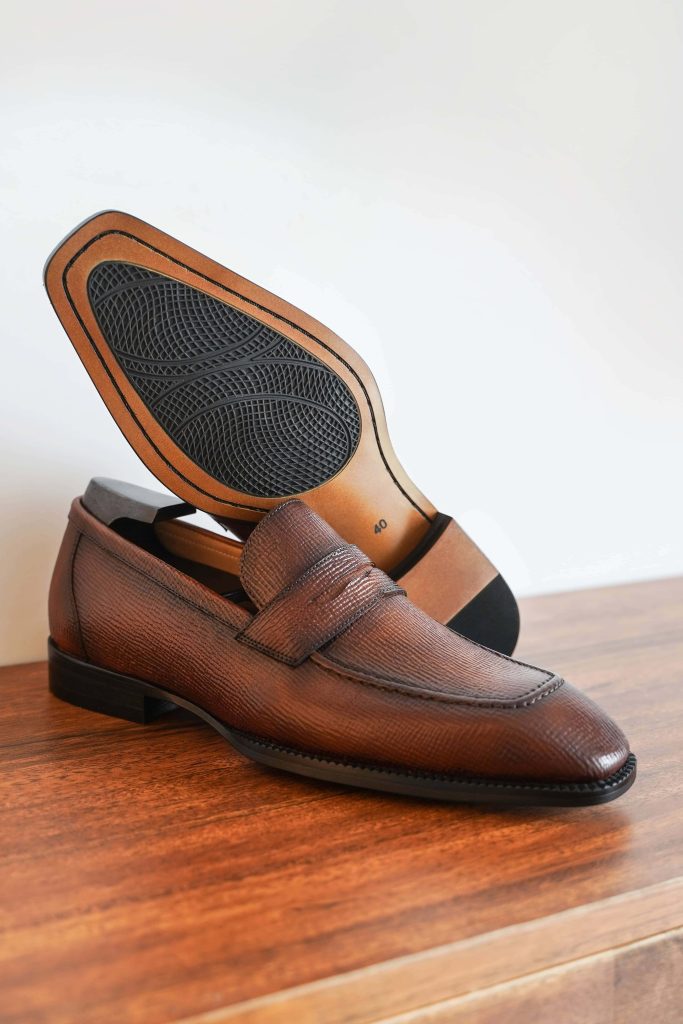
TPR Soles – The Smart Solution for Modern Casual Wear
- What is TPR?
TPR (thermoplastic rubber) is typically SBS‑based—a thermoplastic elastomer that blends rubber‑like flexibility with the melt‑and‑mold efficiency of plastics. In plain English: you get flexible, grippy soles that are easy to injection‑mold and recycle scrap back into production. - Benefits for footwear brands
Lightweight, durable for everyday use, and cost‑effective in volume. It’s a favorite for entry‑ to mid‑tier lines and casual/lifestyle sneakers or loafers that need a clean, molded look with detailed tread. Engineering teams like TPR for consistent durometers and cycle times. - Market relevance
If you’re balancing margin with reliability, TPR is a workhorse. It’s not a tire compound and won’t match vulcanized rubber at extreme temperatures or heavy abrasion, but for everyday city wear it’s a sweet spot—especially when paired with EVA midsoles in lifestyle sneakers. - Manufacturing advantage
Because TPR is thermoplastic, it’s easy to mold, color, texture, and brand—perfect for OEM partners who need flexible production and crisp outsole detail. That’s why you’ll see it across high‑volume private‑label catalogs.
Choosing the Right Sole Material for Your Footwear Line
- Match material to brand positioning
• Luxury or formal lines → Leather & Dainite
• Lifestyle or casual collections → Rubber & TPR
• Hybrid collections → Combination builds (e.g., leather midsole + rubber outsole; or leather soles with rubber inserts) - Consider climate, function, and customer habits
• Leather for elegance and breathability in temperate, mostly‑indoor wear.
• Rubber and TPR where daily durability, weather, or mixed terrain matters.
• Dainite for premium traction without losing that dress‑shoe vibe. - The manufacturer’s role in ensuring quality
It’s not just “pick a sole.” The right factory helps you balance cost, performance, and design intent—testing tread options, tuning hardness, and confirming resoling paths when you’re in welted territory. Hengxin supports this with technical feedback, sample development, and outsole options (you’ll notice many products spec “rubber/leather” outsoles and multiple constructions: cemented, Blake, or Goodyear welted). That flexibility lets you tailor a sole menu for luxury, mid‑range, and entry lines under one roof.
Want a quick internal look at styles you can build from? Check out Hengxin’s category page for Dress Shoes and a classic template like the RS10‑K13 Oxford.
Craftsmanship Beyond Material: Building Soles That Last
Goodyear Welt: The Backbone of Premium Sole Construction
- How it works
A welt is stitched to both the upper and insole; the outsole is then stitched to that welt. The space inside is filled (often with cork), which molds to the foot. This architecture is prized for water resistance and repeat resoles as the upper remains untouched during sole replacement. - Why it matters for brands
Longer wear life, structured comfort as the cork beds in, and near‑universal serviceability. Crockett & Jones highlights the repair advantage: the sole stitch can be cut and the sole removed “without damaging the upper,” which is exactly the promise serious customers expect. - Hengxin’s unique capability
Hengxin’s 360° channeling approach carves a holdfast into a thicker insole (rather than using a glued cotton rib), producing a compact, precise, resolable platform—reassuring for private‑label partners scaling welted product.
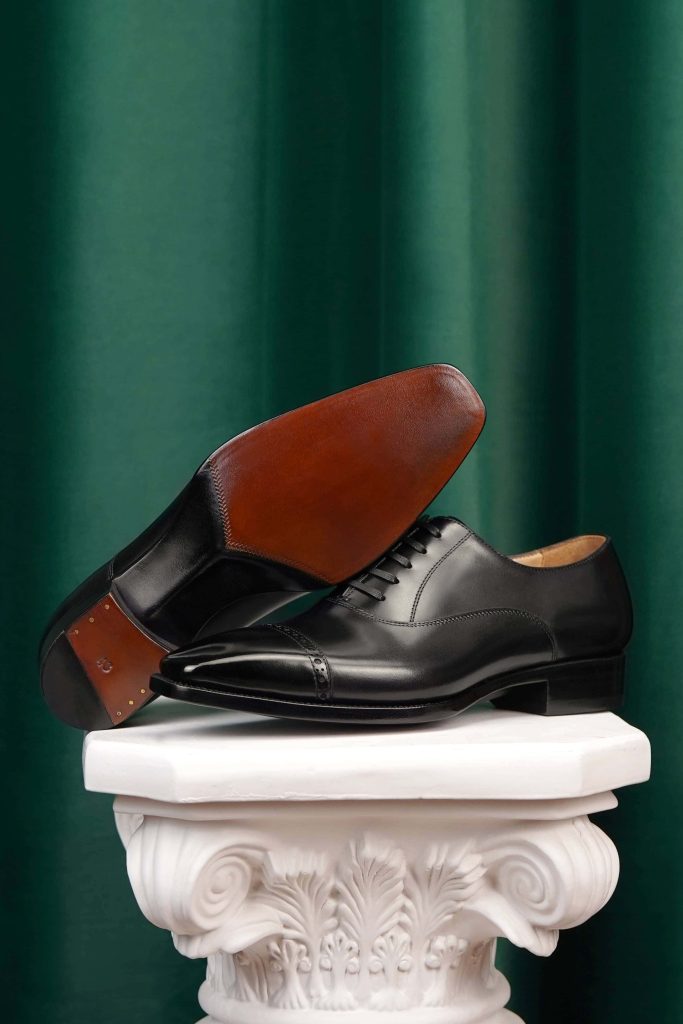
Finishing Touches: The Art of Sole Aesthetics
- Patina hand‑coloring and edge burnishing
These finishing moves add depth and definition—think of a subtle gradient along the sole edge that frames the upper like a fine picture. It signals “boutique” even at scale. Hengxin’s third‑generation patina methods are designed for repeatability across batches, which matters when your B2B orders scale from 50 pairs to 500. - Why brands value craftsmanship
Distinctive finishing elevates perceived quality, helps justify pricing, and wins the close‑up shots that convert on product pages. When craftsmanship and consistency line up, your brand equity compounds with every reorder.
Quick Compare: Which Sole Goes Where?
| Sole type | Look & feel | Grip | Weather | Weight | Resolable with GYW | Best for |
| Leather | Dressy, sleek | Low–medium | Fair (dry) | Light–medium | Yes | Premium Oxfords/Derbys/Monks |
| Dainite (studded rubber) | Classic‑plus | Medium–high | Strong (wet/cold) | Medium | Yes | All‑weather formals, urban boots |
| Rubber (city/commando/microcell) | Versatile | Medium–high | Strong | Light–medium | Yes | Dress‑casual hybrids, outdoor city |
| TPR | Casual, molded | Medium | Good (everyday) | Light | Usually no (cemented) | Lifestyle sneakers/loafers |
Notes: “GYW” = Goodyear welted. Rubber and Dainite can be swapped on GYW builds; TPR is typically used in cemented construction for volume efficiency.
Conclusion: Step Ahead with the Right Foundation
Soles set the character of a shoe before your customer takes a single step. Leather delivers boardroom elegance; Dainite adds quiet confidence when the weather turns; rubber widens your palette for hybrid and outdoor‑inspired lines; TPR powers accessible, everyday comfort at scale. Pick with intent, and a shoe becomes a long‑term companion—not a season’s fling.
If you’re ready to translate that intent into product, Hengxin’s blend of Goodyearwelt precision and patina artistry makes it easy to spec the right outsole for each model—then repeat it beautifully, order after order.

FAQ
- How do leather soles compare to rubber soles?
Leather soles look sleeker and breathe naturally; they’re ideal for formal settings but offer less grip on wet surfaces. Rubber brings traction, weather resistance, and durability—great for urban commutes and year‑round wear. Many brands offer the same last with leather or City/Dainite rubber to fit climate and use. - What is a Dainite sole, and why is it popular?
It’s a studded rubber sole from a British maker dating back to 1894—grippy in all conditions yet neat enough for suits. It doesn’t trap dirt and wipes clean easily, making it a go‑to for dress boots and foul‑weather dress shoes. - Are TPR soles durable for daily wear?
Yes—for everyday, casual use. TPR is an injection‑moldable elastomer that balances flexibility, abrasion resistance, and cost. It’s not meant for extreme heat or heavy industrial use like high‑spec vulcanized rubber, but for lifestyle shoes it’s a solid, budget‑friendly choice. - Can Goodyear‑welted shoes have rubber soles?
Absolutely. The welt lets you stitch on leather or rubber outsoles (including Dainite‑style or City rubber). That’s why GYW shoes are so serviceable—and why they’re often resoled across decades. - How do manufacturers attach different types of soles?
• Cemented: glues bond upper to sole—common for TPR.
• Blake: a direct stitch through insole/upper/outsole—sleeker, flexible.
• Goodyear welt: upper and insole stitched to welt; outsole stitched to welt—durable and resolable. Brands often choose based on target price, silhouette, and service goals.

